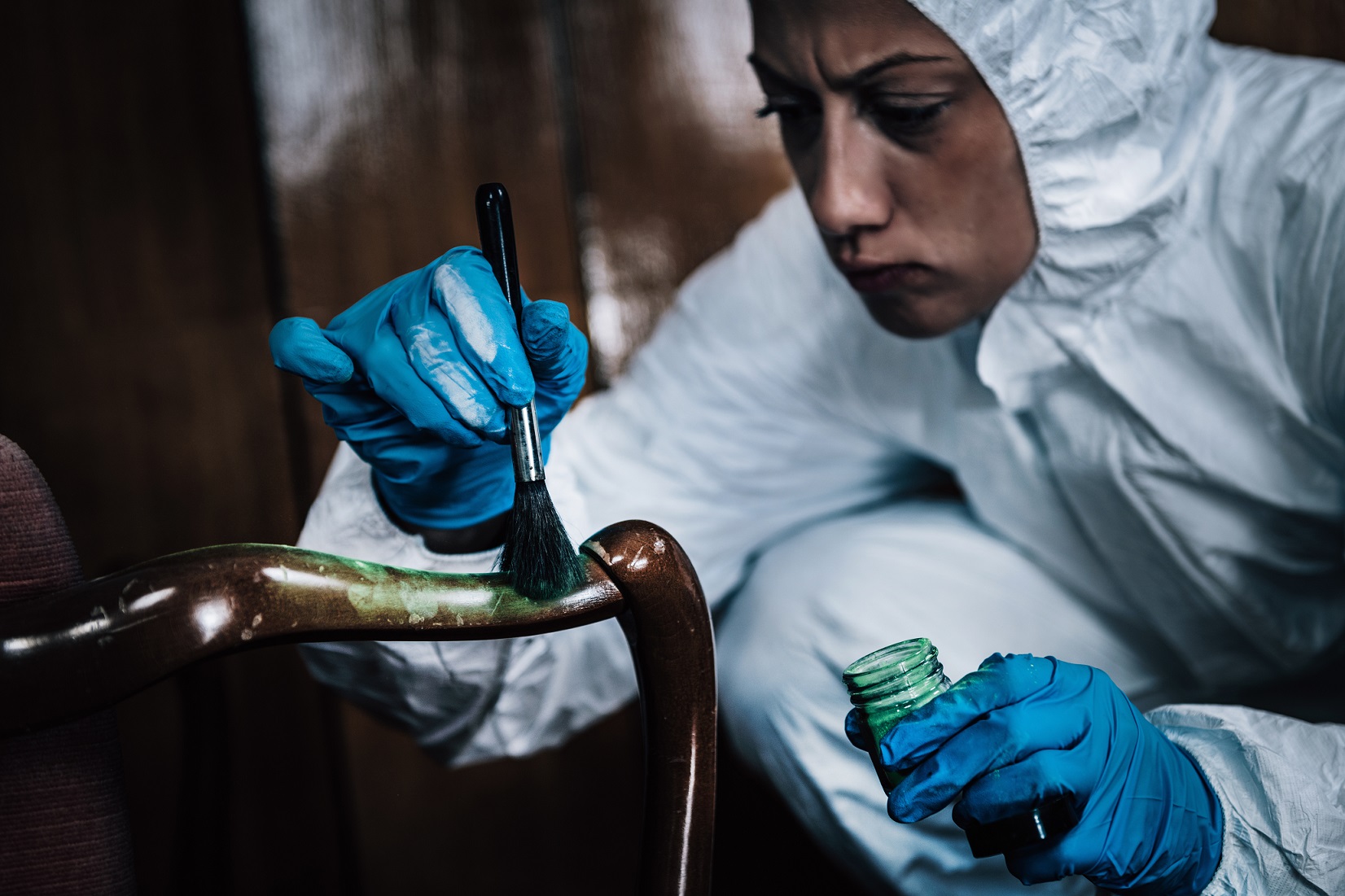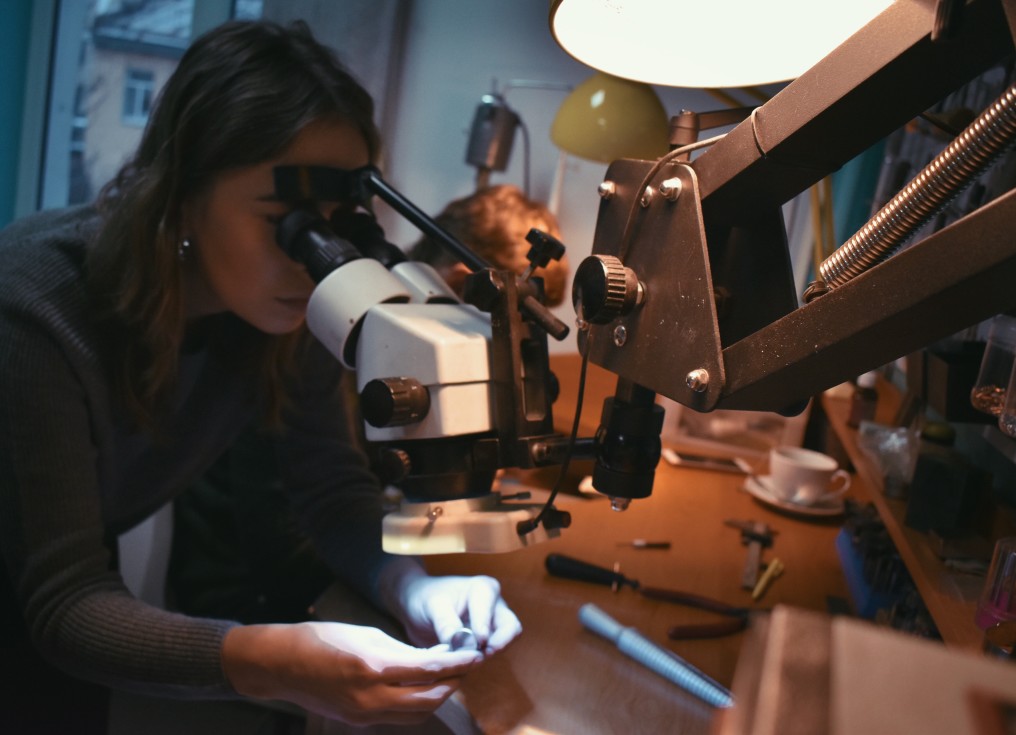Now Reading: Chemometrics in Forensic Chemistry
-
01
Chemometrics in Forensic Chemistry

Chemometrics in Forensic Chemistry
Forensic science is the application of basic sciences and their methods and technologies into criminal and civil investigation. As we move forward with time forensic technologies need to be improved and enhanced as the nature of crime is continuously changing. Various methods are used to analyze the sample like color tests, TLC, analytical instruments.
Chemometrics is an emerging field in forensic investigation and is increasing dynamically from last two decades. Recently developed method of chemometrics in analytical instruments is being widely used all over the world to quantitatively measure the value of concentration of different samples present. It is an approach which uses multivariate methods. It is perhaps much better than the classical approach as the variables can be considered at same time whereas in classical approach, we can analyze only one variable at a time.[1]
Chemometrics was first introduced by a Swedish scientist Svaute World and Bruce R. Kowalski in 1970’s. In chemometrics, we extract chemical information from the measurements made on analytical instruments by utilizing mathematical and statistical methods.[2]-[7] Although definition for the term has been given by many and here, we show you the one given in the journal – Chemometrics and Intelligent Laboratory systems:
“Chemometrics is the chemical disciple that uses mathematical, statistical and other methods employing formal logic to design or select optimal measurement procedures and experiments, and to provide maximum relevant chemical information by analyzing chemical data.” [2]-[7]
Chemometrics is basically a range of methods which include signal processing, calibration, resolution, basic statistics, factorial design, factor analysis, curve fitting, pattern recognition, neural network and detection. Chemometrics is a continuously developing application-driven disciple which has the ability to analyze variety of data and modelling them for multiple arrays of applications.
Chemometrics is divided into two categories –
1. Pattern recognition
2. Multivariate calibration for quantitative purpose
Pattern recognition [8]-[10]
In pattern recognition, data is classified into different groups, classes or categories. Data in its general approach, there are three main steps: (i) Seizing or identifying input data (ii) Extraction of characteristic features of data, and (iii) recognition of the identified data.
Different pattern recognition methods are given below in the table 1.
Table 1. ANN – artificial neural networks; BP ANN – Back propagation ANN; CA – Cluster analysis; CART – classification and regression trees; CCA – Canonical correlation analysis; CVA – canonical variate analysis; kNN – k means procedures, k-nearest neighbour methods; PCA – principal component analysis; PLS-DA – partial least squares regression discriminant analysis; SIMCA – soft independent modelling of class analogy; SOM – soft organising maps
Widely used methods for pattern recognition are SIMCA (soft independent modelling of class analogy) and PLS-DA (partial least squares discriminative analysis). PLS-DA is majorly used in Forensic chemometrics.
Multivariate calibration [1]
Multivariate calibration is the correlation of the known analyte concentration or the measured value of chemical compound and the instrumental response. In multivariate calibration, a combination of number of spectral frequencies are used to determine the approximate concentration in the analyte. For e.g.- near IR spectrum obtained from multicomponent mixtures.
Mathematically, multivariate calibration can be expressed as:
y = Xb + e
where, y = m x 1 vector of quantitative information for analyte of interest in m calibration samples
X = m x w matrix of spectral responses for the calibration samples measured at w predictor variables
e = error factor
b = regression vector
Although, PLS calibration is dominating our multivariate calibration due to the availability of PLS software and better quality of calibration models PLS calibration can also investigate the uncertainties in predictions due to residual square prediction error, the effect of missing measurements by building various intervals for the missing data value.[12]
As discussed earlier, Chemometrics is being used in all disciplines of forensic science such as forensic physics, forensic ballistics, cyber forensics, forensic biology, forensic documents and forensic chemistry. Forensic chemistry deals with disciplines like toxicology, narcotics, fire debris, petroleum products, alcohol, oil and fats, explosives, acid attack cases, trap cases, milk products, fiber and dyes, chemical warfare agents, etc. in which different exhibits come for detection and identification.
Application of chemometric methods in forensic chemistry was first done for the chemical profiling of illicit drugs (amphetamine, methamphetamine, methylenedioxymethamphetamine MDMA, cocaine and heroin)[13]-[15]. In recent times, it is being used for identification in a wide variety of analytical instruments like Raman spectroscopy, Infrared spectroscopy, attenuated total reflectance spectroscopy, Fourier transform infrared spectroscopy, Gas chromatography, High performance liquid chromatography, GC-MS, LC-MS, ATR-FTIR, GC-FID etc. These analytical instruments are used as they are favorable towards exhibits and do not destroy the sample. The output data from these instruments are further analyzed by chemometric methods to get effective, immediate, reliable and unbiased results.[16]
Following are the few examples of analytical instruments with multivariate techniques that have proven to be of use in the field of forensic chemistry:
Use of 3D front face fluorescence spectroscopy with chemometric analysis by independent component analysis (ICA) [17]
A fluorescence spectrum was produced by causing alterations to the structure of wine polyphenols for variations in their pH values. Polyphenols which show fluorescence were subjected to sufficient amount of light which helped in causing alterations in their structure. In 3D fluorescence spectra, Xenon lamp as light source and Xenius spectrofluorimeter was used. ‘Forcing’ was used further to avoid Rayleigh scattering. ICA- by- blocks was used to determine the number of independent components and ICA model was calculated on each unfolded (45×79×81) matrix and the result showed that anthocyanins was present in all variety of grapes and the fluorophores present in the wine gives spectra at pH 7 and pH 8.
ATR-FTIR coupled with PLS and PCR calibration approach [18]
This study focuses on development of technique that is non- destructive, easy and minimal or no sample preparation is required. Cocaine hydrochloride is taken as standard for the analysis of sample of adulterant by ATR – FTIR with DTGC (deuterated tri-glycerine sulphate) detector. The IR spectrum was obtained when signals were recorded between 650 – 4000cm-1 with 16 scan cycles and 4 cm-1 resolution.
Two models for standard cocaine hydrochloride and adulterants were predicted using partial least squares (PLS) and principal component regression (PCR) algorithms carried out in root mean square error of calibration, cross validation and prediction. Pre-treatment of calibration and test set was done by standard normal value (SNV) scaling and multiplicative scatter correction. As a result, both PCR and PLS regression showed good outcomes and PLS pre-treated with SNV showed lower error of prediction.
Attenuated Total reflection Spectroscopy (ATR) with Principal component analysis (PCA) and cluster analysis (CA) [19]
In this study, red lipsticks are differentiated where all the lipstick samples were subjected to primary discrimination by suing ATR spectra obtained at range of 4000-650 cm-1 and chemometric technique PCA. 6 groups were formed by PCA analysis and cluster analysis was further used to classify lipstick samples. As a result, 9 groups were formed which could be compared on the basis of chemical composition.
Two multivariate analysis were compared in the experiment with GC-DMS (Differential mobility spectroscopy) and GC-MS. [20]
Two separate studies were conducted in which samples were extracted by using solid phase micro extraction (SPMC) devices. GC/MS analysis is carried out on 30m x 0.25mm x 0.25 µm, Rtx-5MS capillary column and ultra-pure helium gas was used as the carrier gas with constant flow rate of 2.0 ml/min. SPME injection was performed at 270°C and mass spectra were collected from 45 to 200 m/z.
GC-DMS analysis was carried out under the same conditions. In this, GC capillary column was inserted into DMS inlet where the ion source was UV photoionization and a separation voltage of 1300V was used.
The minimum resolution values were calculated of both the instruments and they found that spectra of GC/MS showed higher resolution than GC-DMS whereas GC-DMS chromatograms were more informative for different ILs than GC-MS chromatograms.
GC X GC-FID used to estimate the age of weathered gasoline samples [21]
In the experiment, four separate studies were conducted upon gasoline samples with varying octane ratings (87 octane gasoline and 89 octane gasoline). The samples were collected from different vendors and weathered in an enclosed chamber held at temp 25.1 ± 0.2°C, 25.0 ± 0.2°C, 24.9 ± 0.3°C and 25.2 ± 0.3°C through which a clean air with constant flowrate of 11.8 L/min was passed. The sample concentration collected was analyzed by GC x GC-FID with primary column 15m x 0.1 mm x 0.1 µm, Equity-5, secondary column 3m X 0.25mm x 0.15 µm, Innowax and Hydrogen as carrier gas with constant flowrate of 0.2 mL/min in primary column and 20.4 mL/min in secondary column. The experiment resulted in approximately 57 data points from each sample and approximately 171 per individual gasoline. The peaks creating 36 variables for each sample was normalized and was used to produce chemometric models by use of PLS-DA.
Two individual classes could be predicted by the model: lightly weathered samples (more than 24 hrs. of exposure time) and relatively fresh samples (less than 12 hrs. of exposure time). For the accuracy of regression models, root mean square error of prediction (RMSEP) was used.
Although, all the studies conducted were under ideal conditions, still different samples gave different time of exposure and mostly accurate data with the help of multivariate analysis. Fresh gasoline was predicted within 30 min of exposure, synthetic gasoline within 40 min of exposure, highly weathered within 5 hrs. of exposure and highly weathered synthetic gasoline within 5.6 hrs. of exposure.
Conclusion and Discussion
Forensic Chemistry is a vast and important discipline in Forensic Science, almost all types of exhibits are analyzed under this field. Chemometrics has proved to be an instrumental part which provides a broad range of quantitative analysis for the Forensic examination of evidence. The use of mathematics and statistics in chemometrics makes studying the spectrogram facile. Being a non-destructive discipline, it can help analyze trace amounts of samples and the ones that couldn’t be analyzed using classical approach. Different models used by the chemometric techniques can be used to identify different compounds, the above-mentioned studies are proof that chemometrics can provide accurate results to the data or the sample analyzed. chemometrics can be used to develop a wide variety of instruments which might prove useful for the identification of undetectable compounds.
References
- R. Kumar, V. Sharma, Chemometrics in Forensic Science, Trends in Analytical Chemistry (2018), doi: 10.1016/j.trac.2018.05.010
- Wold S. Chemometrics: what do we mean with it, and what do we want from it? Chemom Intell Lab Sys 1995;30:109e15.
- Brenton RG. Chemometrics: data analysis for the laboratory and chemical plant. Chichester: John Wiley and Sons; 2003
- Gemperline P. Practical guide to chemometrics, CRC. Boca Raton: Florida; 2006.
- Jing D, Linfang H. Application of chemometrics in quality evaluation of medicinal plants. J Med Plants Res 2006;5:4001e8.
- Lavine B, Workman J. Chemometrics. Anal Chem 2010;82:4699e711.
- Bansal A, Chhabra V, Rawal RK, Sharma S. Chemometrics: a new scenario in herbal drug standardization. J Pharm Anal 2014;4:223e33. http://dx.doi.org/10.1016/j.jpha.2013.12.001.
- S. Wold, M. Sjostrom, SIMCA: a method for analysing chemical data in terms of similarity and analogy, ACS Symp. Ser. 52 (1977) 243–282.
- M. Baker, W. Rayens, Partial least squares for discrimination, J. Chemom. 17 (2003) 166–173.
- R.G. Brereton, G.R. Lloyd, Partial least squares discriminant analysis: taking the magic away, J. Chemom. 28 (2014) 213–225.
- John H. Kalivas (2005) Multivariate Calibration, an Overview, Analytical Letters, 38:14, 2259-2279, DOI: 10.1080/00032710500315904
- S. Wold, H. Martens and H. Wold, the multivariate calibration problem in chemistry solved by PLS method, Institute of Chemistry
- DG Research of the EU Commission, Development of a Harmonized Method for the Profiling of Amphetamines, Project–SMT-CT98-2277, (2003)
- S. Lociciro, P. Esseiva, P. Hayoz, L. Dujourdy, F. Besacier, P. Margot, Cocaine profiling for strategic intelligence, a cross-border project between France and Switzerland part II. Validation of the statistical methodology for profiling of cocaine, Forensic Sci. Int. 177 (2008) 199–206, doi:http://dx.doi.org/10.1016/j. forsciint.2007.12.008.
- L. Strömberg, L. Lundberg, H. Neumann, B. Bobon, H. Huizer, N.W. van der Stelt, Heroin impurity profiling—a harmonisation study for retrospective comparisons, Forensic Sci. Int. 114 (2000) 67–88.
- T.Salonen, B.Ahrens M.Bovens J.Eliaerts S.Huhtala A.Nordgaard I.Alberink, Chemometrics in forensic chemistry, https://doi.org/10.1016/j.forsciint.2019.110138
- Rita Saad, Delphine Jouan-Rimbaud Bouveresse, Nathali Locquet and Douglas N. Rutledge, Using pH variations to improve the discrimination of wines by 3D front face fluorescence spectroscopy associated to independent components analysis, Talanta, http://dx.doi.org/10.1016/j.talanta.2016.03.023
- Stefano Materazzi, Adolfo Gregori, Luigi Ripani, Azzurra Apriceno and Roberta Risoluti, Cocaine profiling: implementation of a predictive model by ATR-FTIR coupled with chemometrics in forensic chemistry, Talanta http://dx.doi.org/10.1016/j.talanta.2017.01.045
- Gładysz, M., Król, M., & Kościelniak, P. (2017). Differentiation of red lipsticks using the attenuated total reflection technique supported by two chemometric methods. Forensic Science International, 280, 130 138. doi:10.1016/j.forsciint.2017.09.019
- Lu, Y., Chen, P. & Harrington, P.B. Comparison of differential mobility spectrometry and mass spectrometry for gas chromatographic detection of ignitable liquids from fire debris using projected difference resolution. Anal Bioanal Chem 394, 2061–2067 (2009). https://doi.org/10.1007/s00216-009-2786-9
- Zorzetti, B.M., Harynuk, J.J. Using GC × GC-FID profiles to estimate the age of weathered gasoline samples. Anal Bioanal Chem 401, 2423–2431 (2011). https://doi.org/10.1007/s00216-011-5130-0












